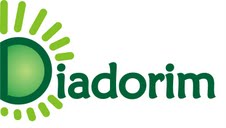Secrets and ‘truths’ about the intersex condition in Grey’s Anatomy
DOI:
https://doi.org/10.9771/peri.v1i16.43016Abstract
Paul Beatriz Preciado states that restricting sex to a binomial is a Western obsession, in an interview in 2008. We analyze how the intersex condition and intersex people are introduced in two episodes of the TV show Grey’s Anatomy. We inquire about the discourses called upon on the narratives of these episodes and by the protagonism or invisibility and erasing of the intersex voices and bodies. We focus on the teachings about these bodies found in this series. We find the reiteration of heteronormativity, the exploitation of affective relations, the medical discourse, the diagnosis and the secret that intersex bodies retain. The latter are used as functioning mechanisms of the sex binomial and to the production of gender identity and “normal” bodies, by the family and by medicine, establishing silence agreements regarding the adequacy of bodies to an intelligibility of gender aligned to sex. The TV show permeates the concept of order more than that of disorder.
Downloads
Downloads
Published
Versions
- 2021-08-16 (2)
- 2021-10-27 (1)
How to Cite
Issue
Section
License
Copyright (c) 2021 Luciana Aparecida Siqueira Silva, Claudiene Santos, Laíne Lopes da Silva, Elenita Pinheiro de Queiroz Silva

This work is licensed under a Creative Commons Attribution-NonCommercial 4.0 International License.
Autores que publicam nesta revista concordam com os seguintes termos:
Autores mantêm os direitos autorais e concedem à revista o direito de primeira publicação, com o trabalho simultaneamente licenciado sob Licença Creative Commons Attribution Noncommercial que permite o compartilhamento do trabalho com reconhecimento da autoria e publicação inicial nesta revista, sendo vedado o uso com fins comerciais.
Autores têm autorização para assumir contratos adicionais separadamente, para distribuição não-exclusiva da versão do trabalho publicada nesta revista (ex.: publicar em repositório institucional ou como capítulo de livro), com reconhecimento de autoria e publicação inicial nesta revista.
Autores têm permissão e são estimulados a publicar e distribuir seu trabalho online (ex.: em repositórios institucionais ou na sua página pessoal) a qualquer ponto antes ou durante o processo editorial, já que isso pode gerar alterações produtivas, bem como aumentar o impacto e a citação do trabalho publicado (Veja O Efeito do Acesso Livre).







